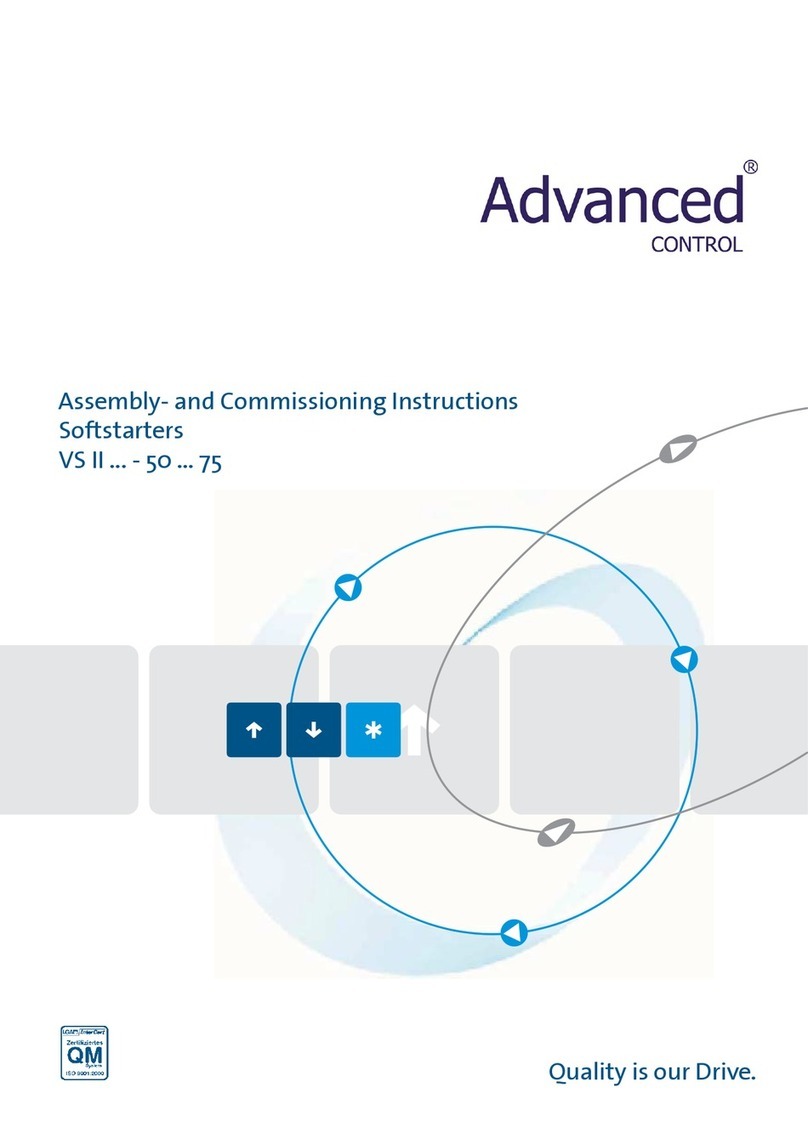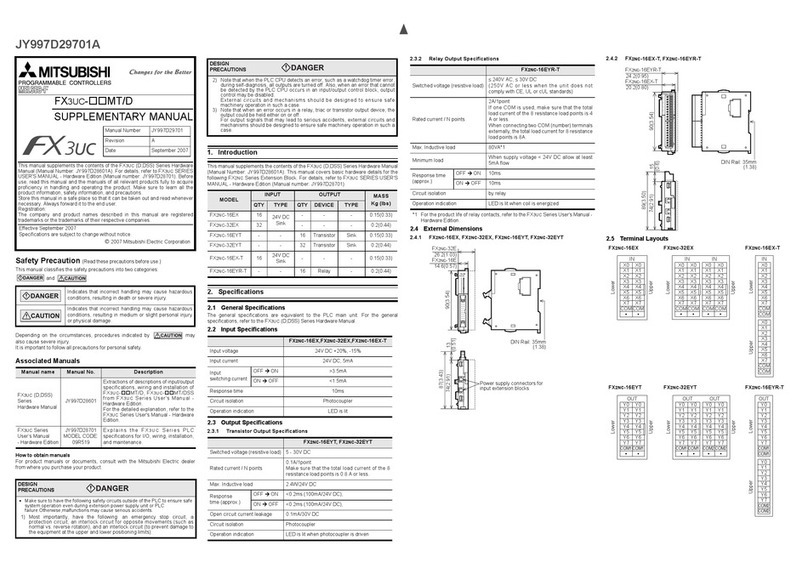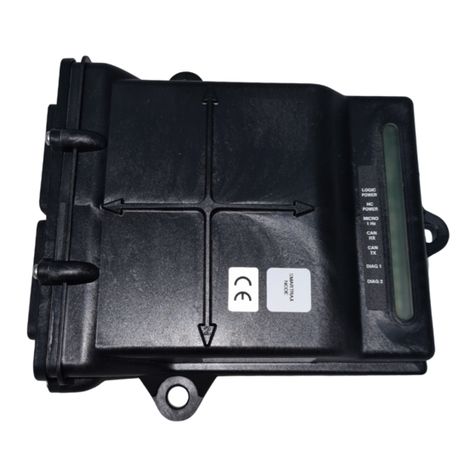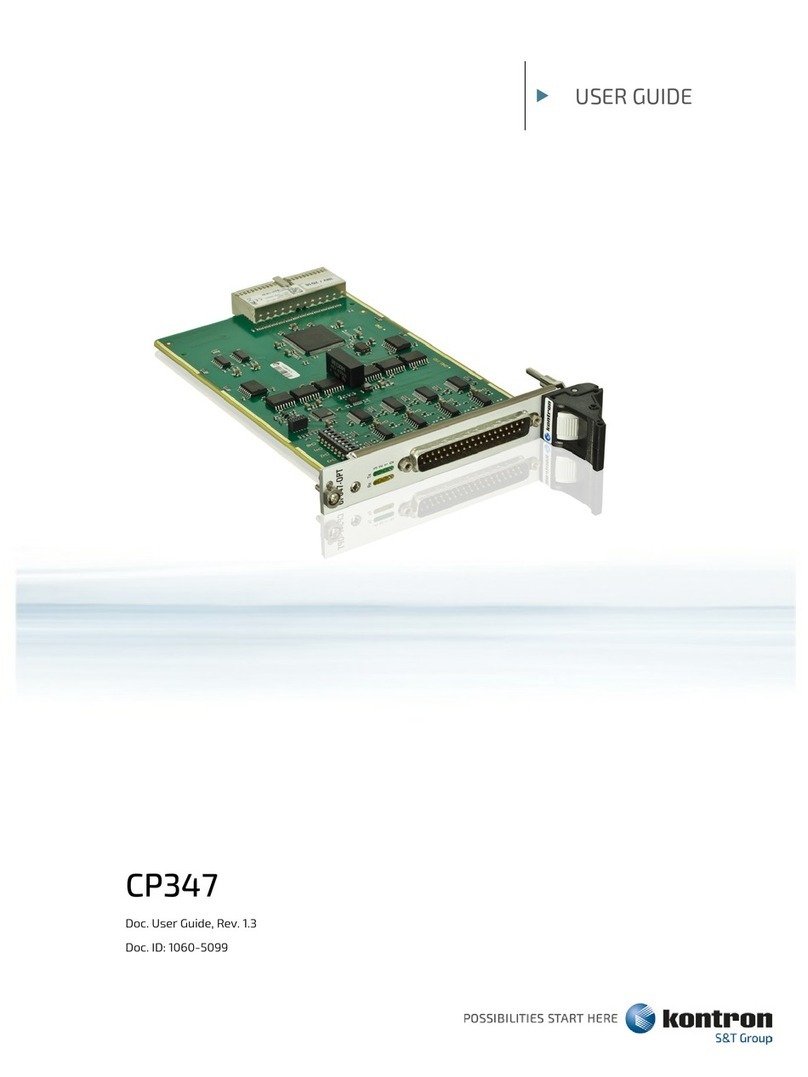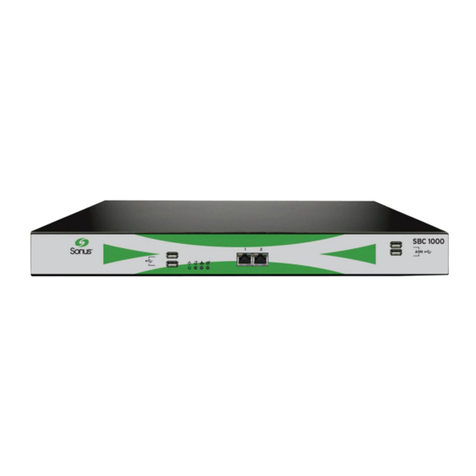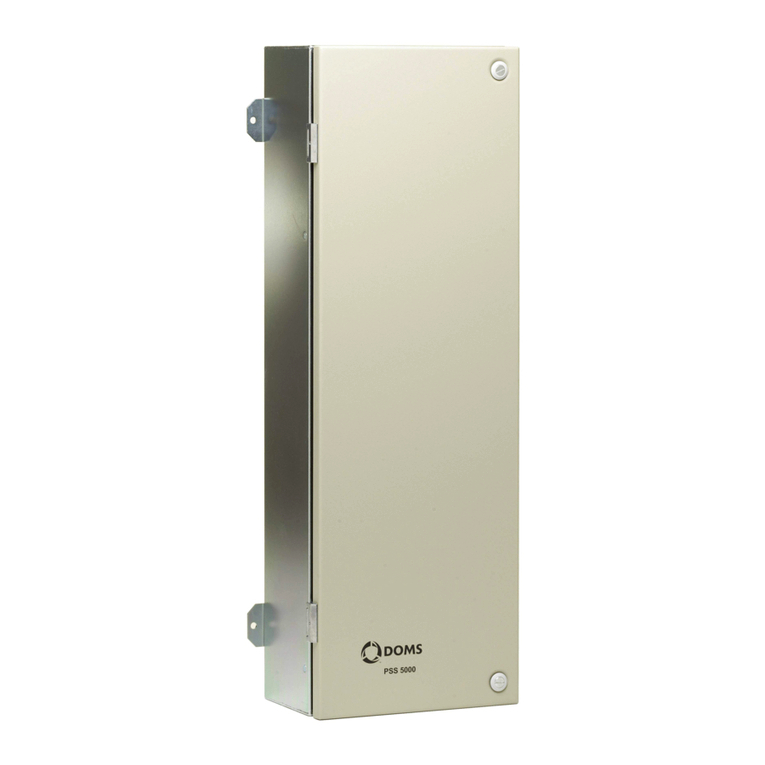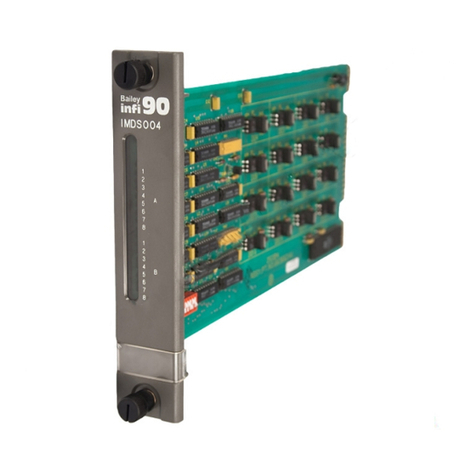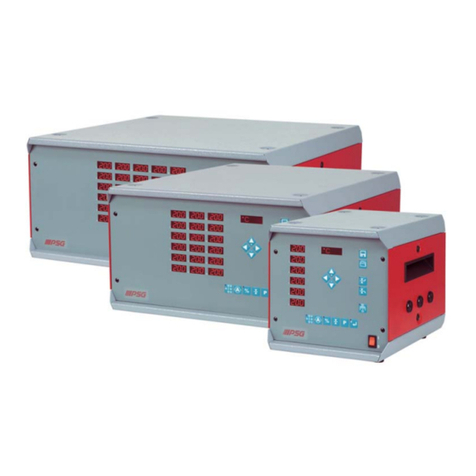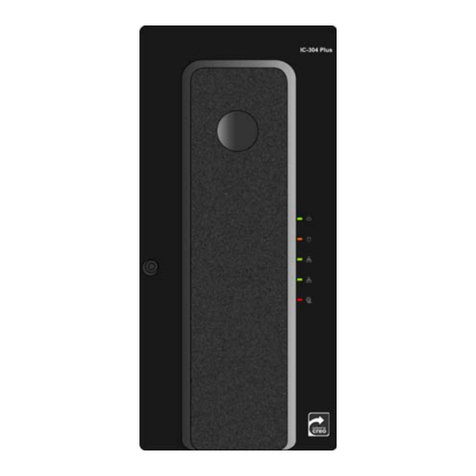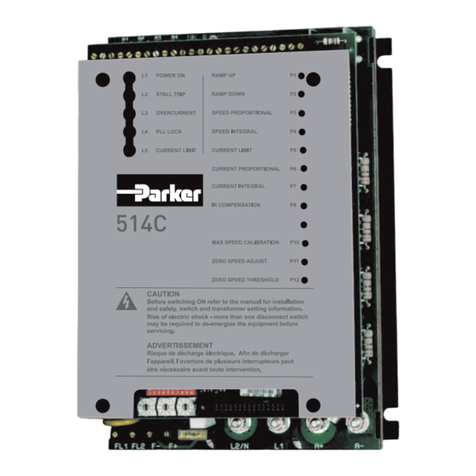Advanced Control VersiStart II Series Training manual

electronic
Quality is our Drive.
Assembly and Commissioning Instructions
Softstarters
VS ... - 17...45

VS II ...-17...45 1
as per 07/10 15700.10005
Table of Contents Page
1. Safety notes 3
2. Conformity 3
3. General description 4
4. Usage to the intended purpose 4
5. EC Declaration of Conformity 5
6. Block diagram 6
7. Commissioning 6
7.1 Mounting instructions 6
7.2 Connection 8
7.3 Parameter settings 9
8. LED indicators 11
8.1 Option „M“ 11
9. Fault 12
9.1 Fault description 12
9.2 Fault remedy 13
9.3 Resetting of faults 13
10. Technical data (standard)* 14
10.1 Environmental conditions 15
11. Dimensioning rules 15
11.1 Dimensioning of pre-fuses 15
11.2 Determining the permissible starting frequency 17
12. Special units 20
12.1 Devices with rated voltage of 230V or 480V 20
12.2 Devices featuring a wide-voltage-range power section 20
12.3 Devices featuring special voltage >= 500V 20
12.4 Devices with motor-PTC input 20
13. Installation guideline 22
13.1 Connection 22
13.1.1 Earthing 22
13.1.2 Cabling 22
13.2 General connection diagram 24
13.3 Typical connections 25
13.4 Motor/Soft start in delta connection (only units with option „M“) 26
13.5 Wide-voltage-range connection 27

2 VS II ...-17...45
Notes and symbols used in these instructions
Note: Notes explain the advantages of certain adjustments or settings and help
you to make use of the device in the best possible way.
Warning notices: Read them carefully and follow them strictly!
Warning notices are indicated in order to protect you against danger or to
help you to prevent the device from being damaged.
Caution: Danger to life through electric shock!
When you see this sign, always make sure that the device is de-energized
and secured against unintentional energizing.
These commissioning instructions were prepared with great care. Nevertheless, Advanced
Control does not assume liability for damage resulting from mistakes
possibly contained in this manual. Technical changes that serve to improve the product are
subject to change without notice.
14. Dimensions 28
15. Special units 28

VS II ...-17...45 3
1. Safety notes
The described devices are electrical equipment for use in industrial electrical power
installations. An impermissible removal of the covers during operation can cause
serious damage to your health, since these devices contain live parts with high
voltages.
Adjustment work may only be performed by trained staff observing the safety regulations.
Assembly and mounting work may only be carried out with the equipment deenergized.
Make sure that all drive components are properly earthed.
Please read these commissioning instructions carefully before putting the device into operation.
Besides, the user must ensure that the devices and associated components are fitted and
connected in accordance with the appliable local, legal and technical regulations. The VDE-
regulations VDE 0100, VDE 0110 (EN 60664), VDE 0160 (EN 50178) , VDE 0113 (EN 60204,
EN 61310),VDE 0660 (EN 50274) plus the appropriate regulations of the TÜV (Technical Control
Association) and the trade associations apply in Germany.
The user must ensure that the drive turns into a safe operating state following a device failure, in
the event of maloperation, or if the control unit has failed etc..
Caution: Even if the motor is at rest, it is not physically separated from the mains.
2. Conformity
In industrial linguistic usage the drive controllers of the type series VersiStart II are called
"devices", however, in the sense of the "law on the safety of equipment", the "EMC-law" or the
"EC-maschinery directive" they are not devices or machines ready for use or connection but they
are components. It is only possible to define their final function, when these components are
integrated into the design and construction of the user.
To be able to use the devices to their intended purpose, it requires power supply networks
according to DIN EN 50160 (IEC38).
The user takes the responsibility that the user’s design and construction comply with the appli-
cable legal provision.
The commissioning is strictly forbidden as long as the conformity of the final product with the
guidelines 2006/42/EC (Machinery directive) and 2006/95/EC (Low voltage directive) is not
proved.

4 VS II ...-17...45
3. General description
In the case of the soft starters of the VersiStart II type the motor voltage is changed in two phases
(1L1/5L3) by a generalized phase control and power semiconductors. Starting from an adjustable
starting trigger angle the trigger angle is continually reduced. Via the adjusted ramp-up time the
motor voltage increases according to a ramp function until the maximum value is reached. When
the acceleration time is over, the power seminconductors are bypassed by integrated relays and
the motor is directly supplied with power from the mains.
After opening of the start/stop-contact, the trigger angle is continuously increased via a ramp-
function, and, as a result, the motor voltage is decreased. The motor softly decelerates with the
adjusted deceleration time.
Acceleration time, starting voltage and deceleration time can be separately adjusted via potentio-
meters.
Acceleration or deceleration are effected by closing or opening of the contact on the terminals
X1/X2.
The boost function is switched on by bridging the terminals X1/X3. Thus, at the beginning of the
soft start, an increased starting voltage is applied to the motor for a period of 0,5s.
The power supply to the control electronics is effected via the power section. On request, the
power supply can also be implemented via an external power supply unit (24V min. 150mA DC).
The devices are suitable for an operation of 3-phase motors in star or delta connection.
Interconnection of motors in a so-called -connection is possible as well.
For -connection, it is necessary to use a main contactor K1, since one motor winding lies
directly between two phases.
4. Usage to the intended purpose
The devices of the VersiStart II-series are electrical equipment that is used in industrial electrical
power installations. They are designed for application in machines, in order to reduce the starting
torque and starting current peaks as well as the tripping torque of drives with three-phase
induction motors.
Typical Applications:
• door and gate drives
• pumps, ventilators, fans
• conveying systems
• packaging machines
• transport systems, assembly lines
• machine applications
3
3

VS II ...-17...45 5
5. EC Declaration of Conformity
EC Declaration of Conformity
Name / Address: Peter Electronic GmbH & Co.KG
Bruckäcker9
92348 Berg
Germany
hereby declares that the following product (device, component, unit) in the version as supplied
Product designation: Softstarter
Serien / type designation: VS II 230...690-17...45; B; M; UL; D; H
Article group: 257...
Year of manufacture: 2005
complies with the provisions of the following EC-directives:
2004/108/EG concerning
Electromagnetic compatibility
and
2006/95/EG concerning
Electrical equipment designed for use within
certain voltage limits
The following harmonized standards have been applied:
EN 60947-1: Low-voltage switchgear and
2008 controlgear
General rules
EN 60947-4-2: Low-voltage switchgear and
2007 controlgear
Contactors and motor-starters -
AC semiconductor motor
controllers and starters
This EC Decleration of Conformity is no longer valid, if the products is modified or changed
without our agreement.
This declaration is issued under the sole responsibility of the signatory.
Berg, 05.08.2009 Dr. Thomas Stiller, Managing Director
(place, date)
(signatory and function of the signatory)
(signature)
The manufacturer / company placing the product on the market
(authorized representatives of the manufacturer / companies placing the product on the market
that are established within the Community)

6 VS II ...-17...45
6. Block diagram
7. Commissioning
The device is to be put into operation in 3 steps:
1. Mounting
2. Connection and
3. Parameter setting
Note:
Please notice the max. permissible starting current (under 7/Technical data).
7.1 Mounting instructions
Caution: Danger to life through electric shock!
The following conditions are to be complied with in order to ensure a safe
and reliable operation of the VersiStart II.
1. The device series VersiStart II is to be used under conditions of the
overvoltage category III.
2. Make sure that pollution degree 2 or better, in accordance DIN EN60644-1 /
IEC664, is complied with.
supply
voltage
Trigger
pulse
generator
6T32T1 4T2
Control
for
bypass
5L31L1 3L2
Electronics
Ramp
control
Start
U start
X8
X7
RA2
t acc t dec
X3
X2
Boost
X6
X5
RA1
X1
X4
control supply U 24VDC
at option "B"
+
s

VS II ...-17...45 7
3. The device has to be installed into a housing (min. degree of protection: IP54).
Please take care of a sufficient heat dissipation.
4. The device must be operated without being exposed to contamination by
water, oil, carbon deposits, dust, etc..
5. Insert in North America, UL and CSA-listed.
5.1 ’Suitabe For Use On A Circuit Capable Of Delivering Not More Then 5kA rms
Symmetrical Amperes, 600 Volts Maximum’ and ’When Protected by A Circuit
Breaker type N2MB2-AF63-NA 63A, 600 Volts Maximum.’
5.2 ’Use Copper Conductors 60/75°C, or 75°C only.’
Place the device vertically on a perpendicular mounting plate with the motor terminals pointing
downwards. The device is to be snap-mounted onto a 35mm top-hat rail according to DIN EN
50022. Underneath the device, no additional heat sources such as heating resistors must be
mounted or arranged.
Warning:
To avoid heat concentrations, a distance of at least 40mm is to be kept
between cable duct and device.
Clearance X
Under normal drive conditions, the devices can be
mounted side by side.
In the case of applications requiring high starting
frequencies and / or high-inertia starting, the devices
should be mounted with a distance of approx. 10mm in
between them, in order to ensure good ventilation of the
heat sink.
On
Bypass
versi start II
1
2
3
4
5
6
7
8
0
100%
0
100%
0
100%
t
t
U
Start
X
min. 40mm
min. 40mm

8 VS II ...-17... 45
7.2 Connection
Power section (see also connection diagram)
Control section
The input resistance of the control inputs is 10kOhm. To control them, it is necessary to use
switching contacts enabling reliable switching of the lower control currents (e.g., AgNi+Au)!
If the contact on the terminals X1 a. X2 is closed, the motor accelerates with the adjusted accele-
ration time ramp. When the contact is open, the motor decelerates with the adjusted deceleration
time ramp.
Caution: Danger to life through electric shock!
The motor is not physically separated from the mains.
Alternatively, the device can also be controlled with d.c. voltage.
If only soft starts are required, VersiStart II may also be controlled via the main contactor. For this
purpose, the terminals X1 and X2 have to be bridged.
Adjusting the control type
Devices of the VersiStart II series may be controlled by two types of control.
1. Control with a switching contact or switching transistor between terminal X1 and X2.
2. Control by d.c. voltage 10 … 24VDC between terminals X2 and X4.
Control supply voltage USonly in the case of wide-voltage devices (option B)
Between the terminals X1 (+) and X4 ( ) an auxiliary voltage of 24VDC ±10%/150mA is to be
injected.
Terminal 1L1:
Terminal 3L2:
Terminal 5L3:
Earth connection
Terminal 2T1:
Terminal 4T2:
Terminal 6T3:
Mains voltage L1
Mains voltage L2
Mains voltage L3
PE
Motor terminal U
Motor terminal V
Motor terminal W
X2
Start/Stop
Control terminals +
X1 X3 X4
RA 1 RA 2
Boost
Fault Device
bypassed
X5 X6 X7 X8

VS II ...-17...45 9
7.3 Parameter settings
On the front panel there are 3 potentiometers by means of which the following settings can be
made.
Default setting of potentiometers:
Adjusting soft start
To adjust an optimum starting behavior, you should carry out a test run. Contrary to the default
settings, you should make the following basic potentiometer-settings.
Switch on the supply voltage and start acceleration. Watch the starting behavior and adapt the
approporiate parameters to your drive. At any rate, the starting voltage should be adjusted with
the potentiometer UStart so that the motor starts immediately. At the same time, unnecessary
humming with the motor being at rest is to be avoided.
The potentiometer is to be adjusted so that the requested acceleration time or starting
characteristics is achieved. The acceleration time should always be chosen as short as
possible, in order to keep the thermal stress acting on device and motor as small as possible.
This leads to short times until the bypass relays pull in and ensures good acceleration
characteristics while the power semiconductors and motor are less heated. This is of special
importance in the case of high-inertia starting or high switching frequencies. The acceleration
time, however, has to be adjusted so that the motor reaches nominal speed before the internal
bypass relays close.
Warning:
If the adjusted acceleration time is too short, the internal bypass relays close
before the motor has reached nominal speed. This can cause damage to
the bypass relays.
Parameter Poti Setting range
Acceleration time Acceleration time adjustable from 0.5...10sec
Starting voltage UStart 40…80% of rated voltage
Deceleration time adjustable from 0.5...10sec
Potentiometer (acceler. time) = mid-position
Potentiometer UStart (starting voltage) = left stop (counter-clockwise)
Potentiometer (deceler. time) = left stop (counter-clockwise)
Fans, roller tracks, conveyor belts, etc. 50%, UStart 0%, 0%
Centrifuges, conveyor screws, mixers,
compressors, etc.
50%, UStart 50%, 50%
Pressure pumps, etc. 50%, UStart 50%, 50%

10 VS II ...-17... 45
Adjusting soft stop
Note: Soft stop is only useful for pump drives or applications in the case of which
the drive comes to a stop immediately after switch off. In the case of drives
driving high-inertia loads, soft stop is not sensible.
Note: To enable soft stop, the VersiStart II, during the deceleration phase, has
to be supplied with power from the supply mains.
In the case of these devices, the cut-off voltage is factory-set to 70%.
The potentiometer is to be adjusted so that the requested deceleration time or
deceleration characteristic is reached.
Caution: Danger to life through electric shock!
Even if the motor is at rest, it is not physically separated from the mains.
Warning!
Make sure that the specified switching frequency is not exceeded!

VS II ...-17...45 11
8. LED indicators
On the device front panel there are 2 light-emitting diodes indicating the following operational
states.
On the control terminals X5 / X6 (RA 1) and X7 / X8 (RA 2) two signaling relays are available
which signal the following operational states:
8.1 Option „M“
The signaling contact RA 2 will be closed when acceleration is started. After decelleration is
finished the signaling contact will be opened again.
LED Operational status
Green Device is connected to mains voltage
Yellow Start completed, device bypassed
Yellow - flashing
with increasing or decreasing frequency
Soft start / Soft stop
Yellow - flashing
with constant frequency
Fault
RA 1 Fault.
Under normal operating conditions the signaling contact RA 1 is closed, it only opens
if a fault occurs.
RA 2 Device bypassed.
When the start-up ramp is over and the motor is supplied with nominal voltage or the
bypass relays are closed, the signaling contact RA 2 will be closed.

12 VS II ...-17... 45
9. Fault
The device series VersiStart II monitors various fault conditions. If a fault is detected, the device
signals the fault with the yellow LED (flashing at constant frequency). In the case of a fault, the
signaling relay RA 1 is opened. The various fault conditions are indicated via different flashing
frequencies of the yellow LED.
9.1 Fault description
Fault LED Operational status
1Yellow LED flashing 2x repeatedly
with a short pause
Heat sink temperature is too high/device is
thermally overloaded, or in the case of
devices with motor PTC (see 12.4) the motor
temperature is too high.
2Yellow LED flashing 3x repeatedly
with a short pause
Electronics fault
3Yellow LED flashing 4x repeatedly
with a short pause
Mains phase failure / Trigger failure in
phase 1
4Yellow LED flashing 5x repeatedly
with a short pause
Mains phase failure / Trigger failure in
phase 3
5Yellow LED flashing 6x repeatedly
with a short pause
Motor phase failure /
Power semiconductor(s) defective in phase 1
6Yellow LED flashing 7x repeatedly
with a short pause
Motor phase failure/
Power semiconductor(s) defective in phase 3
7Yellow LED flashing 8x repeatedly
with a short pause
General synchronization error/Mains or motor
circuit defective

VS II ...-17...45 13
9.2 Fault remedy
In case of a fault, please proceed as follows:
9.3 Resetting of faults
To reset a device failure, it is necessary to disconnect the device from the supply voltage. After
the cause of the fault has been remedied by trained expert personnel, the supply voltage can be
reconnected. The device works again under normal service conditions.
Devices with option B (wide-voltage-range power section) must be reset by disconnect the control
supply voltage USon the terminals X1 and X4.
Fault 1: Check the frequency of starts and the starting current and also observe the max.
ambient temperature. Give the device and/or the motor enough time between
starts to cool down. The heat dissipation can be improved by forced cooling, e.g.,
by means of a fan mounted unterneath the device or by using a motor with a sepa-
rately driven fan.
Fault 2: Defect in the internal control electronics. Send device to the producer to have it
checked.
Fault 3/4: Mains supply is interrupted. Motor lead interrupted, power semiconductor(s)
defective, motor defective. Check motor and wiring. Send device to the producer
to have it inspected.
Fault 5/6: Mains supply is interrupted. Power semiconductors do not trigger. Motor rating is
too small. Check as to whether the motor is suitable for the device rating. Send
device to the producer to have it checked.
Fault 7: Mains or motor wiring is interrupted. Power semiconductor(s) defective. Check
wiring. Send device to producer to have it inspected.

14 VS II ...-17... 45
10. Technical data (standard)*
* For special voltages please see our supplement.
Type designation, VersiStart VS II 400-17 VS II 400.25 VS II 400-32 VS II 400-45
Mains / motor voltage
acc. to DIN EN 50160 (IEC 38)
400V ±10% 50/60Hz
Control supply voltage USonly in
the case of option „B“
24VDC ±10%/150mA
max. Motor rating at 380/415V
(rated power)
7.5kW 11kW 15kW 22kW
Rated device current (Ie)17A 25A 32A 45A
max. Power dissipation
- in operation
- in standby
29.5W
7.5W
29.5W
7.5W
29.5W
7.5W
27W
7.5W
min. Motor load 20% of device rating
Acceleration time 0.5 … 10s
Starting voltage 40 … 80% of rated voltage
Deceleration time 0.5 … 10s
Restart time 200ms
max. Switching frequency at 3x Ie
and 5s
50/h 35/h 25/h 10/h
Cross-sect. area for connection:
Control terminals
Power terminals
1.5mm²
6mm²
1.5mm²
16mm²
Tigthening torque 1.2-1.5 Nm
11-13 Ibs in
1.5-1.7 Nm
13-15 Ibs in
I²t - Power semiconductors 4900A²s 4900A²s 6050A²s 6600A²s
Contact rating of
output relays RA 1 / RA 2
3A/250V AC
3A/30V DC
Input resistance Control inputs 10kOhm
Surge strength 4kV
Weight 1kg
Special voltages (optional) 230V / 480V / wide-voltage range 400-600V with
control supply voltage US24VDC/150mA (Option „B“)

VS II ...-17...45 15
10.1 Environmental conditions
1) The reductions refer to rated power output.
11. Dimensioning rules
11.1 Dimensioning of pre-fuses
Pre-fuses F can be dimensioned according to the following instructions.
Basically, two types of fuse protection are available for the user.
1. Fusing according to allocation type „1“, DIN EN 60947-4-2.
After a short circuit, the VersiStart II device is allowed to be inoperative and repair work is
possible.
2. Fusing according to allocation type „2“, DIN EN 60947-4-2.
After a short circuit, the device must be suitable for further use. However, there is the
danger that the contacts of the bypass or braking relays weld. Therefore, if possible, these
contacts are to be checked prior to reconnecting these contacts to the mains supply. If this
check cannot be carried out by the user, the device has to be returned to the producer in
order to have it checked.
The following dimensioning information refers to the below operating conditions:
• Use of standard asynchronous motors
• Standard acceleration and/or deceleration times
• Switching frequencies not exceeding the values specified in the data sheet
Fusing according to allocation type „1“
As pre-fuses we recommend to use line protection fuses (utilization category gL) or automatic
circuit-breakers with type K tripping characteristic. In the case of automatic circuit-breakers the
tripping characteristic of the type series is to be taken into account. With 2x Inthe tripping time
should be at least 20s (I1).
Storage temperature -25 ... 70°C
Ambient temperature 0 ... 45°C up to an installation altitude of 1000m,
not exposed to moisture condensation
Power reduction1) above 45°C - 2% per 1°C up to max. 60°C and
altitudes above 1000m -2% per 100m
Degree of protection IP 20
Environment Overvoltage categ. III (TT / TN-systems),
pollution degree 2
Installation class 3

16 VS II ...-17... 45
The fuse values are to be determied by taking the conductor cross-sectional area of the wiring
into account. Depending on the rated motor current, the maximally occurring starting current
(normally up to the 5-fold rated device current) and the starting frequency, the wiring cross-
sectional area is to be determined. Table 1 shows the values for numerous applications, i.e., with
a 3-fold nominal current as mean starting current and a max. starting time of 10s. In the case of
parameter values exceeding these values, it may be necessary to adapt the fuse value accor-
dingly.
Note: Wiring cross-sectional area according to DIN VDE 0100-430,
DIN EN 57100-430.
Table 1
Fusing according to allocation type „2“:
The power semiconductors are to be protected by fuses of the utilization class gR (semiconductor
protection fuses, high-speed fuses). However, since these fuses do not ensure line protection, it
is necessary to use additionally line protection fuses (utilization category gL).
To protect the semiconductors it is necessary to select gR-fuses featuring cutoff-I²t-values which
are approx. 10-15% below the I²t-value of the power semiconductor (see technical data). In this
connection, the fuse rating of the selected fuse should not be smaller than the starting current to
be expected.
Note: Advanced control does not prescribe the use of semiconductor protection
fuses. However, for some UL- or CSA-listed devices there are exceptions
which are indicated in the relevant commissioning instructions.
Note 1 On the basis of the I²t-value of the power semiconductors, the starting time
and possibly the max. starting current, the fuse supplier is able to select a
suitable type. Due to the great variety of producers, sizes and types, Advanced
Control does not recommend any particular fuses.
Note 2 If the value of the fuse or the cutoff-I²t-value is selected too small, it may
happen that the semiconductor fuse reacts during the starting phase or
during deceleration.
Rated device
current (techn. data)
Device type Fuse value
in the case of
allocation type 1
Starting frequencies
Starts / h
17A VS II 400-17 25A 40
25A VS II 400-25 35/40A 30
32A VS II 400-32 50A 20
45A VS II 400-45 63A 20

VS II ...-17...45 17
11.2 Determining the permissible starting frequency
The starting frequency depends on the:
1. starting current or the heat loss across the power semiconductors.
2. current carrying capacity and the temperature increase of the power semiconductors.
3. heat sink’s capability of absorbing the heat loss and passing the temperature increase on
to the environment.
The following diagrams are to assist you in determining the maximum starting frequency per hour,
i.e., on the basis of the given maximum starting current and for various starting times.
Should the requested starting frequency not be reached, a different device series has to be
chosen.
Example: In a drive, a 15 kW-motor is to be started. A maximum starting current of 120A has
been measured. This approximately corresponds to the 4-fold nominal current. The
device employed is a VS II 400-32. From the applicable chart it is now possible to
read off a max. starting frequency per hour lying between 280 (starting time = 1s)
and 28 (starting time = 10S).
VersiStart II 400-17
2xIe
2xIe
3xIe
3xIe
4xIe
4xIe
5xIe
5xIe
6xIe
6xIe
1
10
100
1000
110
Anlaufzeit/Ramp-up time (s)
Starts/h

18 VS II ...-17...45
VersiStart II 400-25
2xIe
2xIe
3xIe
3xIe
4xIe
4xIe
5xIe
5xIe
6xIe
6xIe
1
10
100
1000
110
Anlaufzeit/Ramp-up time (s)
Starts/h
VersiStart II 400-32
2xIe
2xIe
3xIe
3xIe
4xIe
4xIe
5xIe
5xIe
6xIe
6xIe
1
10
100
1000
110
Anlaufzeit/Ramp-up time (s)
Starts/h

VS II ...-17... 45 19
These devices must be reseted by disconnect the auxiliary voltage.
VersiStart II 400-45
2xIe
2xIe
3xIe
3xIe
4xIe
4xIe
5xIe
5xIe
6xIe
6xIe
1
10
100
1000
110
Anlaufzeit/Ramp-up time (s)
Starts/h
Other manuals for VersiStart II Series
1
This manual suits for next models
4
Table of contents
Other Advanced Control Controllers manuals
Popular Controllers manuals by other brands

Voyager
Voyager CSW3007 Connection guide
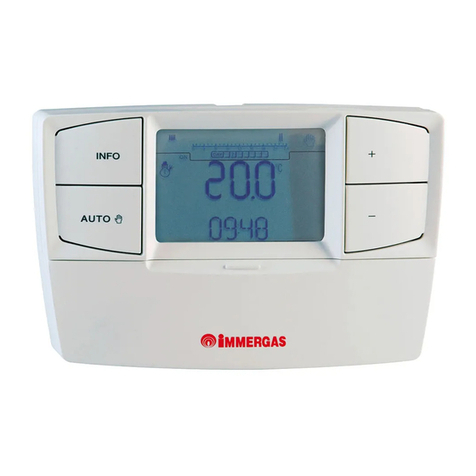
Immergas
Immergas CARV2 Instruction and warning book
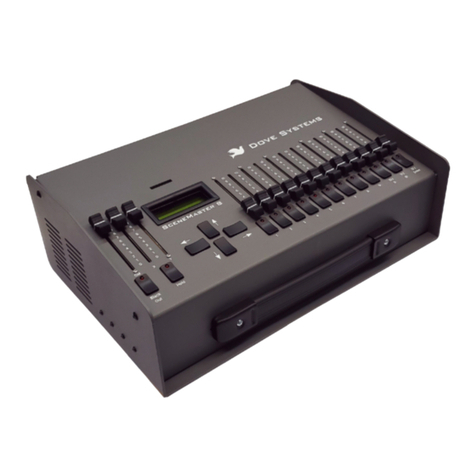
Dove Lighting Systems
Dove Lighting Systems SceneMaster 8 user manual
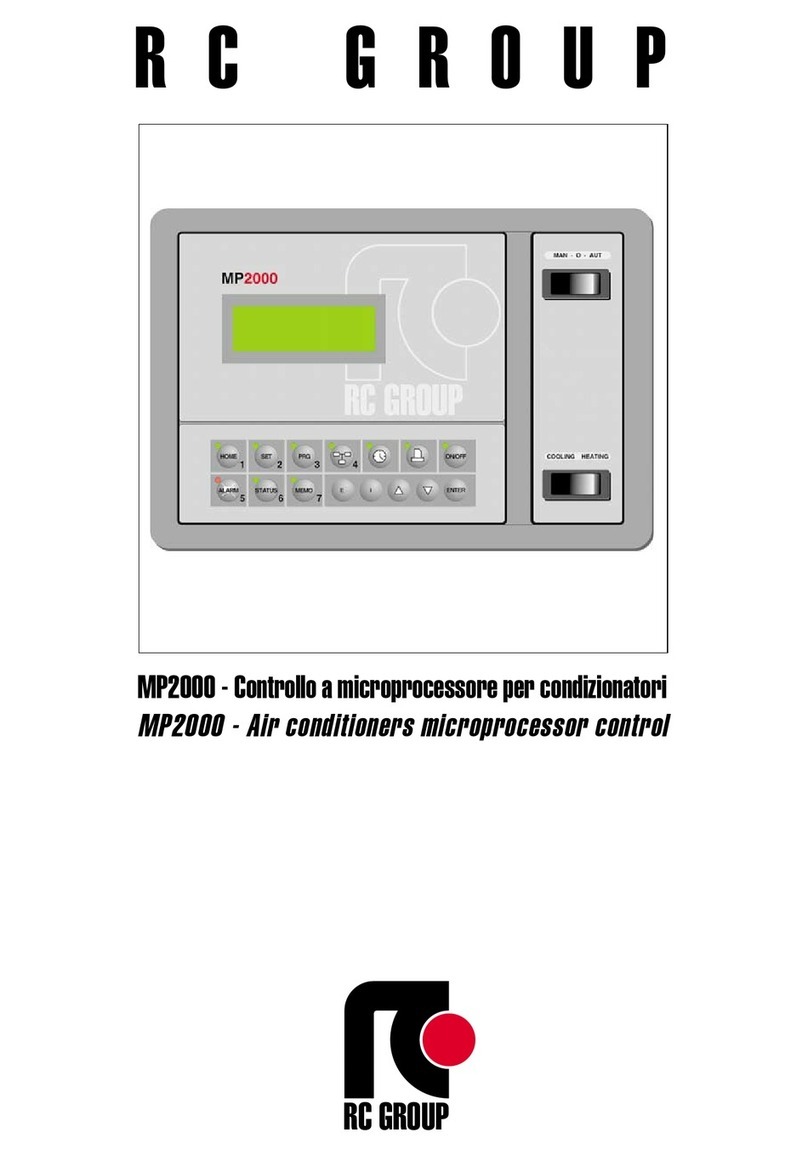
RC GROUP
RC GROUP MP2000 user manual
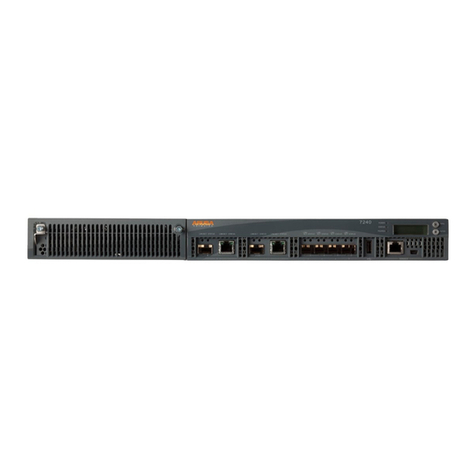
Hewlett Packard Enterprise
Hewlett Packard Enterprise Aruba 7240-US Product End-of-Life Disassembly Instructions
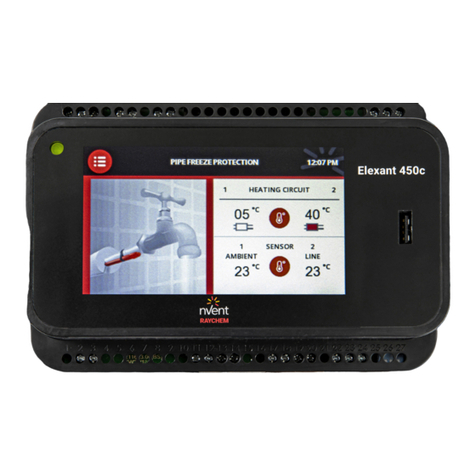
nVent RAYCHEM
nVent RAYCHEM Elexant 450c Operation manual
